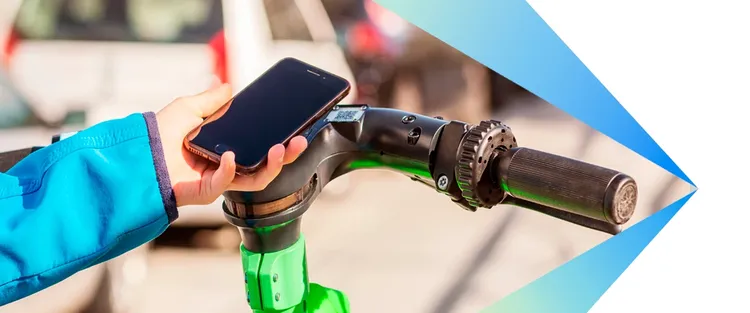<p><span class="medium"><br>June 8, 2023</span></p>
Turn your phone into a key with UWB
<p><b>As if your phone didn’t do enough, it will soon provide secure, sharable, hands-free access control via the ultra wideband wireless standard.</b></p>
<h4>In the news</h4> <p>Your phone does everything else—why shouldn’t it <a href="https://staceyoniot.com/ultra-wideband-will-turn-your-phone-into-a-car-key/" target="_blank" rel="noopener noreferrer">unlock your car</a>?</p> <p>The underlying technology is a standard called ultra wideband (UWB), and you’re going to be hearing a lot more about it. Embedded in <a href="https://en.wikipedia.org/wiki/List\_of\_UWB-enabled\_mobile\_devices" target="_blank" rel="noopener noreferrer">several generations of smartphones</a>, it is mainly used in Apple’s AirTag and Samsung’s SmartTag Plus to locate lost items.</p> <p>UWB’s big sell is that it can locate a device to within a half-inch (12.7mm) or so. It accomplishes this by measuring how long it takes for extremely short radio pulses to travel between devices, known as “time of flight.”</p> <p>One helpful way to think of UWB is as an adjunct to both GPS and Bluetooth. UWB is more precise—and better able to work indoors—than the former, and it helps actualize the promise of the latter.</p> <p>Picture yourself leaving the office at quitting time one evening. As you approach your car in the parking lot, a signal sent via UWB unlocks it. At the other end of the commute, as you reach your neighborhood and then your driveway, your home’s lights are turned on. The heat is adjusted. Perhaps your favorite Netflix show is cued up. Naturally, the car locks itself as you walk in your front door—which, in turn, has been unlocked.</p> <p>For now, as <a href="https://www.cnet.com/tech/mobile/apples-u1-chip-and-android-brings-uwb-location-tech-to-your-car-or-home/" target="_blank" rel="noopener noreferrer">this piece concedes</a>, “UWB's uses are limited. But as it matures and spreads to more devices, UWB could lead to a world where just carrying your phone or wearing your watch helps log you into your laptop as you approach or lock your house when you leave.”</p> <h4>The Cognizant take</h4> <p>At its core, UWB enables accurate and secure measurement of proximity, enabling myriad use cases in access control that rely on some form of user authentication. “Physical keys and biometric systems have their place,” says Tim Meyer, Director, EV & Fleet Electrification/Smart Connected Mobility, in Cognizant’s IoT Solutions Practice. “But UWB brings the convenience of hands-free detection and, with it, access permissions.”</p> <p>Meyer raises the auto-key use case as an example. “The traditional fob suffers from poor security as well as difficulty when it comes to sharing,” he points out. “A UWB-implemented digital key, on the other hand, will have highly secure communication and will be easily shared via email or text message, or embedded in an app.” In addition, the fine range-finding of UWB creates both a “welcome” zone around a car and a smaller “unlock” zone. “Bluetooth alone doesn’t offer that accuracy,” Meyer says. “Renting a car will never be the same!”</p> <p>Another example is unlocking a hotel room, which requires an RFID card or a cumbersome Bluetooth-enabled app. By contrast, Meyer says, “with a UWB app, not only will the unlocking be more precise; it also brings the possibility of sharing digital keys with friends and family. In the same vein, the TV in the room will detect your presence and configure your Netflix account for the duration of your stay.”</p> <p>In short, UWB will enable a new level of user delight, Meyer notes—and strong brand loyalty for enterprises that implement such innovations.</p>
<p>Understand the transformative impact of emerging technologies on the world around us as they address our most significant global challenges.</p> <p><a href="mailto:editorialboard@cognizant.com">editorialboard@cognizant.com</a></p>

